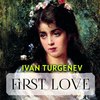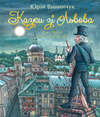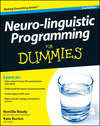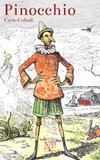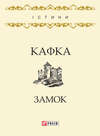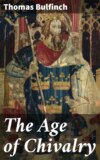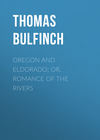Kitabı oku: «The Classic Myths in English Literature and in Art (2nd ed.) (1911)», sayfa 31
299. Roman Poets of Mythology. Virgil, called also by his surname, Maro, from whose poem of the Æneid we have taken the story of Æneas, was one of the great poets who made the age of the Roman emperor, Augustus, celebrated. Virgil was born in Mantua in the year 70 B.C. His great poem is ranked next to those of Homer, in that noble class of poetical composition, the epic. Virgil is inferior to Homer in originality and invention. The Æneid, written in an age of culture and science, lacks that charming atmosphere of belief which invests the naïve, or popular, epic. The myths concerning the founding of Rome, which Virgil has received from earlier writers, he has here fused into a literary epic. But what the Æneid lacks of epic simplicity, it makes up in patriotic spirit, in lofty moral and civic ideals, in correctness of taste, and in stylistic form.
Ovid, often alluded to in poetry by his other name, Naso, was born in the year 43 B.C. He was educated for public life and held some offices of considerable dignity; but poetry was his delight, and he early resolved to cultivate it. He accordingly sought the society of contemporary poets and was acquainted with Horace and saw Virgil, though the latter died when Ovid was yet too young and undistinguished to have formed his acquaintance. Ovid spent an easy life at Rome in the enjoyment of a competent income. He was intimate with the family of Augustus, the emperor; and it is supposed that some serious offense given to a member of that family was the cause of an event which reversed the poet's happy circumstances and clouded the latter portion of his life. At the age of fifty he was banished from Rome and ordered to betake himself to Tomi on the borders of the Black Sea. His only consolation in exile was to address his wife and absent friends. His letters were all in verse. They are called the "Tristia," or Sorrows, and Letters from Pontus. The two great works of Ovid are his "Metamorphoses" or Transformations, and his "Fasti," or Poetic Calendar. They are both mythological poems, and from the former we have taken many of our stories of Grecian and Roman mythology. These poems have thus been characterized:
"The rich mythology of Greece furnished Ovid, as it may still furnish the poet, the painter, and the sculptor, with materials for his art. With exquisite taste, simplicity, and pathos he has narrated the fabulous traditions of early ages, and given to them that appearance of reality which only a master hand could impart. His pictures of nature are striking and true; he selects with care that which is appropriate; he rejects the superfluous, and when he has completed his work, it is neither defective nor redundant. The 'Metamorphoses' are read with pleasure by the young and old of every civilized land."
In an incidental manner, Horace, the prince of Roman lyric poets, and the lyric and elegiac writers, Catullus, Tibullus, and Propertius, have liberally increased our knowledge of Greek and Roman myth.399
Seneca, the teacher of Nero, is best known for his philosophical treatises; but he wrote, also, tragedies, the materials of which are well-known Greek legends. Apuleius, born in Africa, 114 A.D., interests us as the compiler of a clever romance, The Golden Ass;400 the most pleasing episode of which, the story of Cupid and Psyche, has been elsewhere related.401
300. Records of Norse Mythology. 402 A system of mythology of especial interest, – as belonging to the race from which we, through our English ancestors, derive our origin, – is that of the Norsemen, who inhabited the countries now known as Sweden, Denmark, Norway, and Iceland. Their mythological lore has been transmitted by means of Runes, Skaldic poems, the Eddas, and the Sagas.
The Runes. The earliest method of writing prevalent among the Norsemen was by runes. The word means hidden lore, or mystery. The earliest runes were merely fanciful signs supposed to possess mysterious power. As a synonym for writing, the term was first applied to the Northern alphabet, itself derived from ancient Greek and Roman coins. Of the old Scandinavian runes several specimens have been found – one an inscription on a golden horn of the third or fourth century A.D., which was dug up in Schleswig a hundred and sixty years ago; another, on a stone at Tune in Norway. From such an alphabet the Anglo-Saxon runes were derived. Inscriptions in later Scandinavian runes have been discovered in Sweden, Denmark, and the Isle of Man. The characters are of the stiff and angular form necessitated by the materials on which they were inscribed, – tombstones, spoons, chairs, oars, and so forth.403 It is doubtful whether mythological poems were ever written in this way; dedications to pagan deities, ditties of the eleventh century, and love-spells have, however, been found.
The Skaldic Poems. The bards and poets of the Norsemen were the Skalds. They were the depositaries of whatever historic lore there was; and it was their office to mingle something of intellectual gratification with the rude feasts of the warriors, by rehearsing, with such accompaniments of poetry and music as their skill could afford, the exploits of heroes living or dead. Such songs were called Drapas. The origin of Skaldic poetry is lost in mythic or prehistoric darkness, but the Skalds of Iceland continued to play a most important part in the literary development of the north as late as the end of the fourteenth century. Without their coöperation, the greater part of the songs and sagas of genuine antiquity could hardly have reached us. The Skaldic diction, which was polished to an artistic extreme, with its pagan metaphors and similes retained its supremacy over literary form even after the influence of Christianity had revolutionized national thought.404
The Eddas. The chief mythological records of the Norse are the Eddas and the Sagas. The word Edda has usually been connected with the Icelandic for great-grandmother;405 it has also been regarded as a corruption of the High German Erda, Mother Earth, from whom, according to the lay in which the word first occurs, the earliest race of mankind sprang,406– or as the point or head of Norse poetry,407 or as a tale concerned with death,408 or as derived from Odde, the home of the reputed collector of the Elder Edda. But, of recent years, scholars have looked with most favor upon a derivation from the Icelandic óðr, which means mind, or poetry.409 There are two Icelandic collections called Eddas: Snorri's and Sæmund's. Until the year 1643 the name was applied to a book, principally in prose, containing Mythical Tales, a Treatise on the Poetic Art and Diction, a Poem on Meters, and a Rhymed Glossary of Synonyms, with an appendix of minor treatises on grammar and rhetoric – the whole intended as a guide for poets. Although a note in the Upsala manuscript, of date about 1300 A.D., asserted that this work was "put together" by Snorri Sturlason, who lived 1178-1241, the world was not informed of the fact until 1609, when Arngrim Johnsson made the announcement in his Constitutional History of Iceland.410 While the main treatises on the poetic art are, in general, Snorri's, the treatises on grammar and rhetoric have been, with more or less certitude, assigned to other writers of the twelfth and thirteenth centuries. It is probable, too, that in the Mythical Tales, or the Delusion of Gylfi, Snorri merely enlarged and edited with poetical illustrations the work of earlier hands. The poets of the fourteenth and fifteenth centuries do not speak of Snorri, but they refer continually to the "rules of Edda," and frequently to the obscurity and the conventionality of Eddic phraseology, figures, and art. Even at the present day in Iceland it is common to hear the term "void of Eddic art," or "a bungler in Eddic art." A rearrangement of Snorri's Edda, by Magnus Olafsson (1574-1636), is much better known than the original work.
In 1642, Bishop Bryniolf Sveinsson discovered a manuscript of the mythological poems of Iceland. Misled by theories of his own and by a fanciful suggestion of the famous antiquary Biorn of Scardsa, he attributed the composition of these poems to Sæmund the Wise, a historian who lived 1056-1133. Henceforth, consequently, Snorri's work is called the Younger, or Prose Edda, in contradistinction to Bryniolf's find, which is known as the Elder, the Poetical Edda, or the Edda of Sæmund. The oldest manuscript of the Poetical Edda is of the thirteenth century. Its contents were probably collected not later than 1150. The composition of the poems cannot well be placed earlier than the ninth or tenth centuries after Christ; and a consideration of the habits, laws, geography, and vocabulary illustrated by the poems leads eminent scholars to assign the authorship to emigrants of the south Norwegian tribes who, sailing westward, "won Waterford and Limerick, and kinged it in York and East England."411 The poems are Icelandic, however, in their general character and history. They are principally of heroic and mythical import: such as the stories of Balder's Fate, of Skirnir's Journey, of Thor's Hammer, of Helgi the Hunding's Bane, and the twenty lays that in fragmentary fashion tell the eventful history of the Volsungs and the Nibelungs.412
The Sagas. The Eddas contain many myths and mythical features that contradict the national character of both Germans and Norsemen, but the sagas have their roots in Norse civilization and are national property.413 Of these mythic-heroic prose compositions the most important to us is the Volsunga Saga, which was put together probably in the twelfth century and is based in part upon the poems of the Elder Edda, in part upon floating traditions, and in part upon popular songs that now are lost.414
301. Records of German Mythology.[**412] The story of the Volsungs and the Nibelungs springs from mythological sources common to the whole Teutonic race. Two distinct versions of the saga survive, – the Low or North German, which we have already noticed in the lays of the Elder Edda and in the Norse Volsunga Saga, and the High or South German, which has been preserved in German folk songs and in the Nibelungenlied, or Lay of the Nibelungs, that has grown out of them. The Norse form of the story exhibits a later survival of the credulous, or myth-making, mental condition. The Lay of the Nibelungs absorbed, at an earlier date, historical elements, and began sooner to restrict the personality of its heroes within the compass of human limitations.415
Although there are many manuscripts, or fragments of manuscripts, of the Nibelungenlied that attest its popularity between the thirteenth and sixteenth centuries, it was not until the Swiss critic, J. J. Bodmer, published, in 1757, portions of two ancient poems, "The Revenge of Kriemhild" and "The Lament over the Heroes of Etzel," that the attention of modern scholars was called to this famous German epic. Since that time many theories of the composition of the Nibelungenlied have been advanced. It has been held by some that the German epic is an adaptation of the Norse version;416 by others, that the Scandinavians, not the Germans, borrowed the story; and by others still, that the epics, while proceeding from a common cradle, are of independent growth. The last theory is the most tenable.417 Concerning the history of the Nibelungenlied, it has been maintained that since, during the twelfth century, when no poet would adopt any other poet's stanzaic form, the Austrian Von Kürenberg used the stanzaic form of the Nibelungenlied, the epic must be his.418 It has also been urged that the poem, having been written down about 1140, was altered in metrical form by younger poets, until, in 1200 or thereabouts, it assumed the form preserved in the latest of the three great manuscripts.419 But the theory advanced by Lachmann is still of great value: that the poem consists of a number of ancient ballads of various age and uneven worth; and that, about 1210, a collector, mending some of the ballads to suit himself, strung them together on a thread of his own invention.
In fine, the materials of the poem would persuade us not only of its origin in very ancient popular lays, but of their fusion and improvement by the imaginative effort of at least one, and probably of several poets, who lived and wrote between 1120 and 1200 A.D. The metrical structure, also, would indicate derivation from the German folk song and modification due to multifarious handling on the part of popular minstrels and poets of written verse.420
302. Records of Oriental Mythology: Egyptian. 421 Although the myths of Egypt, India, and Persia are of intense interest and importance, they have not materially affected English literature. The following is, however, a brief outline of the means by which some of them have been preserved.
The Egyptian records are (1) The Hieroglyphs, or sacred inscriptions in Tombs of the Kings, and other solemn places, – conveying ideas by symbols, by phonetic signs, or by both; (2) The Sacred Papyri, containing hymns to the gods; (3) The Books of the Dead and of the Lower Hemisphere, – devoted to necromantic incantations, prayers for the souls of the departed, and other rituals.
303. Indian Records. (1) The Vedas, or Holy Scriptures of the Hindus, which fall into four divisions. The most ancient, the Rig-Veda, consists of hymns of an elevated and spiritual character composed by families of Rishis, or psalmists, as far back, perhaps, as 3000 B.C., not later than 1400 B.C. They give us the religious conceptions of the Aryans when they crossed the Himalayas and began to push toward Southern Hindustan. The Sama-Veda is a book of solemn chants and tunes. The Yajur-Veda comprises prayers for sacrificial occasions, and interpretations of the same. The Atharva-Veda shows, as might be expected of the youngest of the series, the influence upon the purer Aryan creed of superstitions borrowed, perhaps, from the aboriginal tribes of India. It contains spells for exorcising demons and placating them.
(2) The Indian Epics of classical standing. They are the Mahâbhârata and the Râmâyana. Scholars differ as to the chronological precedence. The Great Feud of the Bhâratas has the air of superior antiquity because of the numerous hands and generations that have contributed to its composition. The Adventures of Râma, on the other hand, recalls a more primitive stage of credulity and of savage invention. The Mahâbhârata is a storehouse of mythical tradition. It contains several well-rounded epic poems, the most beautiful of which is the Episode of Nala, – a prince who, succumbing to a weakness common to his contemporaries, has gambled away his kingdom. The Great Feud of the Bhâratas is, indeed, assigned to an author – but his name, Vyâsa, means simply the Arranger. The Râmâyana purports to have been written by the poet Vâlmîki. It tells how Sita, the wife of Prince Râma, is carried off to Ceylon by Râvana, king of the demons, and how Râma, by the aid of an army of monkeys, bridges the straits between India and Ceylon and, slaying the demon, recovers his lovely and innocent wife. The resemblance between the plot and that of the Iliad has inclined some scholars to derive the Indian from the Greek epic. But, until the relative antiquity of the poems is established, the Iliad might as well be derived from the Râmâyana. The theory is unsubstantiated. These epics of India lack the artistic spirit and grace of the Iliad and the Odyssey, but they display a keener sympathy with nature and a more romantic appreciation of the loves and sorrows of mankind.
304. Persian Records. The Avesta, or Sacred Book of the ancient Persians, composed in the Zend language and later translated into medieval Persian, – or Pahlavi, – contains the Gáthás, or hymns of Zoroaster and his contemporaries, and scriptures of as recent a date as the fifth century B.C. Zoroaster, a holy man of God, was the founder or the reformer of the Persian religion. He lived as early as the fourteenth or fifteenth century B.C., and his system became the dominant religion of Western Asia from the time of Cyrus (550 B.C.) to the conquest of Persia by Alexander the Great. The teachings of Zoroaster are characterized by beautiful simplicity, and by an unwavering faith in the ultimate victory of righteousness (Ormuzd) over evil (Ahriman).
COMMENTARY 422
[It is hoped that this Commentary may be useful to general readers, to students of art, and to teachers in the secondary schools, as well as to pupils. The cross references are always to sections; and the section numbers correspond with those of the text in the body of the book. The letter C. prefixed to a number indicates Commentary.]
3. Chaos: a gap. Compare the "Beginning Gap" of Norse mythology. Eros: a yearning. Erebus: black, from root meaning to cover.
4. Uranus (Greek Ouranos) corresponds with the name of the Indian divinity Varunas, root var, 'to cover.' Uranus is the starry vault that covers the earth; Varunas became the rain-giving sky. Titan: the honorable, powerful; the king; later, the signification was limited to the sun. Oceanus probably means flood. Tethys: the nourisher, nurse. Hyperion: the wanderer on high;423 the sun. Thea: the beautiful, shining; the moon. She is called by Homer Euryphaëssa, the far-shining. Iapetus: the sender, hurler, wounder. Themis: that which is established, law. Mnemosyne: memory. Other Titans were Cœus and Phœbe, figurative of the radiant lights of heaven; Creüs and Eurybië, mighty powers, probably of the sea; Ophion, the great serpent, and Eurynome, the far-ruling, who, according to Apollonius of Rhodes, held sway over the Titans until Cronus cast them into the Ocean, or into Tartarus.
Cronus (Greek Kronos) is, as his name shows, the god of ripening, harvest, maturity. Rhea comes from Asia Minor, and was there worshiped as the Mother Earth, dwelling creative among the mountains. Cronus (Kronos) has been naturally, but wrongly, identified with Chronos, the personification of Time, which, as it brings all things to an end, devours its own offspring; and also with the Latin Saturn, who, as a god of agriculture and harvest, was represented with pruning-knife in hand, and regarded as the lord of an ancient golden age.
The three Cyclopes were Brontes, Steropes, and Arges. Cyclops means the round-eyed. The Hecatonchires were Briareus, the strong, called also Ægæon; Cottus, the striker; Gyes, or Gyges, the vaulter, or crippler. Gyges is called by Horace (Carm. 2, 17, 14) Centimanus, – the hundred-handed.
Illustrative. Milton, in Paradise Lost, 10, 581, refers to the tradition of Ophion and Eurynome, who "had first the rule of high Olympus, thence by Saturn driven." Hyperion: see Shakespeare's Hamlet, "Hyperion's curls, the front of Jove himself." Also Henry V, IV, i; Troilus and Cressida, II, iii; Titus Andronicus, V, iii; Gray, Progress of Poesy, "Hyperion's march they spy, and glittering shafts of war"; Spenser, Prothalamion, "Hot Titans beames." On Oceanus, Ben Jonson, Neptune's Triumph. On Saturn, see Shakespeare, Much Ado About Nothing, I, iii; 2 Henry IV, II, iv; Cymbeline, II, v; Titus Andronicus, II, iii; IV, iii; Milton, Paradise Lost, 1. 512, 519, 583, and Il Penseroso, 24. See Robert Buchanan, Cloudland, "One like a Titan cold," etc.; Keats, Hyperion; B. W. Procter, The Fall of Saturn.
In Art. Helios (Hyperion) rising from the sea: sculpture of eastern pediment of the frieze of the Parthenon (British Museum). Mnemosyne: D. G. Rossetti (crayons and oil).
5. Homer makes Zeus (Jupiter) the oldest of the sons of Cronus; Hesiod makes him the youngest, in accordance with a widespread savage custom which makes the youngest child heir in chief. – Lang, Myth, Ritual, etc., 1, 297. According to other legends Zeus was born in Arcadia, or even in Epirus at Dodona, where was his sacred grove. He was in either case reared by the nymphs of the locality. According to Hesiod, Theog. 730, he was born in a cave of Mount Dicte, in Crete.
6. Atlas, according to other accounts, was not doomed to support the heavens until after his encounter with Perseus.
8. See Milton's Hymn on the Nativity, "Not Typhon huge ending in snaky twine." The monster is also called Typhoeus (Hesiod, Theog. 1137). The name means to smoke, to burn. The monster personifies fiery vapors proceeding from subterranean places. Other famous Giants were Mimas, Polybotes, Ephialtes, Rhœtus, Clytius. See Preller, 1, 60. Briareus (really a Centimanus) is frequently ranked among the giants.
Illustrative. Shakespeare, Troilus and Cressida, I, ii; Milton, Paradise Lost, 1, 199, and Hymn on the Nativity, 226; M. Arnold, Empedocles, Act 2; Pope, Dunciad, 4, 66. For giants, in general, see Milton, Paradise Lost, 3, 464; 11. 642, 688; Samson Agonistes, 148.
10-15. Prometheus: forethought.424 Epimetheus: afterthought. According to Æschylus (Prometheus Bound) the doom of Zeus (Jupiter) was only contingent. If he should refuse to set Prometheus free and should, therefore, ignorant of the secret, wed Thetis, of whom it was known to Prometheus that her son should be greater than his father, then Zeus would be dethroned. If, however, Zeus himself delivered Prometheus, that Titan would reveal his secret and Zeus would escape both the marriage and its fateful result. The Prometheus Unbound of Æschylus is lost; but its name indicates that in the sequel the Titan is freed from his chains. And from hints in the Prometheus Bound we gather that this liberation was to come about in the way mentioned above, Prometheus warning Zeus to marry Thetis to Peleus (whose son, Achilles, proved greater than his father, – see 191); or by the intervention of Hercules who was to be descended in the thirteenth generation from Zeus and Io (see 161 and C. 149); or by the voluntary sacrifice of the Centaur Chiron, who, when Zeus should hurl Prometheus and his rock into Hades, was destined to substitute himself for the Titan, and so by vicarious atonement to restore him to the life of the upper world. In Shelley's great drama of Prometheus Unbound, the Zeus of tyranny and ignorance and superstition is overthrown by Reason, the gift of Prometheus to mankind. Sicyon (or Mecone): a city of the Peloponnesus, near Corinth.
Illustrative. Milton, Paradise Lost, "More lovely than Pandora whom the gods endowed with all their gifts." Shakespeare, Titus Andronicus, II, i, 16.
Poems. D. G. Rossetti, Pandora; Longfellow, Masque of Pandora, Prometheus, and Epimetheus; Thos. Parnell, Hesiod, or the Rise of Woman. Prometheus, by Byron, Lowell, H. Coleridge, Robert Bridges; Prometheus Bound, by Mrs. Browning; translations of Æschylus, Prometheus Bound, Augusta Webster, E. H. Plumptre; Shelley, Prometheus Unbound; R. H. Horne, Prometheus, the Fire-bringer; E. Myers, The Judgment of Prometheus; George Cabot Lodge, Herakles, a drama. See Byron's Ode to Napoleon Buonaparte. The Golden Age: Chaucer, The Former Age (Ætas Prima); Milton, Hymn on the Nativity.
In Art. Ancient: Prometheus Unbound, vase picture (Monuments Inédits, Rome and Paris). Modern: Thorwaldsen's sculpture, Minerva and Prometheus. Pandora: Sichel (oil), Rossetti (crayons and oil), F. S. Church (water colors).
16. Dante (Durante) degli Alighieri was born in Florence, 1265. Banished by his political opponents, 1302, he remained in exile until his death, which took place in Ravenna, 1321. His Vita Nuova (New Life), recounting his ideal love for Beatrice Portinari, was written between 1290 and 1300; his great poem, the Divina Commedia (the Divine Comedy) consisting of three parts, – Inferno, Purgatorio, Paradiso, – during the years of his exile. Of the Divine Comedy, says Lowell, "It is the real history of a brother man, of a tempted, purified, and at last triumphant human soul." John Milton (b. 1608) was carried by the stress of the civil war, 1641-1649, away from poetry, music, and the art which he had sedulously cultivated, into the stormy sea of politics and war. Perhaps the severity of his later sonnets and the sublimity of his Paradise Lost, Paradise Regained, and Samson Agonistes are the fruit of the stern years of controversy through which he lived, not as a poet, but as a statesman and a pamphleteer. Cervantes (1547-1616), the author of the greatest of Spanish romances, Don Quixote. His life was full of adventure, privation, suffering, with but brief seasons of happiness and renown. He distinguished himself at the battle of Lepanto, 1571; but in 1575, being captured by Algerine cruisers, he remained five years in harsh captivity. After his return to Spain he was neglected by those in power. For full twenty years he struggled for his daily bread. Don Quixote was published in and after 1605. Corybantes: the priests of Cybele, whose festivals were violent, and whose worship consisted of dances and noise suggestive of battle.
18. Astræa was placed among the stars as the constellation Virgo, the virgin. Her mother was Themis (Justice). Astræa holds aloft a pair of scales, in which she weighs the conflicting claims of parties. The old poets prophesied a return of these goddesses and of the Golden Age. See also Pope's Messiah, —
All crimes shall cease, and ancient fraud shall fail,
Returning Justice lift aloft her scale:
and Milton's Hymn on the Nativity, 14, 15. In Paradise Lost, 4, 998 et seq., is a different conception of the golden scales, "betwixt Astræa and the Scorpion sign." Emerson moralizes the myth in his Astræa.
19-20. Illustrative. B. W. Procter, The Flood of Thessaly. See Ovid's famous narrative of the Four Ages and the Flood, Metamorphoses, 1, 89-415. Deucalion: Bayard Taylor, Prince Deukalion; Milton, Paradise Lost, 11, 12.
Interpretative. This myth combines two stories of the origin of the Hellenes, or indigenous Greeks, – one, in accordance with which the Hellenes, as earthborn, claimed descent from Pyrrha (the red earth); the other and older, by which Deucalion was represented as the only survivor of the flood, but still the founder of the race (Greek laós), which he created by casting stones (Greek lâes) behind him. The myth, therefore, proceeds from an unintended pun. Although, finally, Pyrrha was by myth-makers made the wife of Deucalion, the older myth of the origin of the race from stones was preserved. See Max Müller, Sci. Relig., London, 1873, p. 64.
21. For genealogy of the race of Inachus, Phoroneus, Pelasgus, and Io, see Table D. Pelasgus is frequently regarded as the grandson, not the son, of Phoroneus. For the descendants of Deucalion and Hellen, see Table I of this commentary.
22. In the following genealogical table (A), the names of the great gods of Olympus are printed in heavy-face type. Latin forms of names or Latin substitutes are used.
Illustrative. On the Gods of Greece, see E. A. Bowring's translation of Schiller's Die Götter Griechenlands, and Bayard Taylor's Masque of the Gods. On Olympus, see Lewis Morris, The Epic of Hades. Allusions abound; e. g. Shakespeare, Troilus and Cressida, III, iii; Julius Cæsar, III, i; IV, iii; Hamlet, V, i; Milton, Paradise Lost, 1, 516; 7, 7; 10, 583; Pope, Rape of the Lock, 5, 48, and Windsor Forest, 33, 234; E. C. Stedman, News from Olympia. See also E. W. Gosse, Greece and England (On Viol and Flute).
23. The Olympian Gods. There were, according to Mr. Gladstone (No. Am. Rev. April, 1892), about twenty Olympian deities:425 (1) The five really great gods, Zeus, Hera, Poseidon, Apollo, and Athene; (2) Hephæstus, Ares, Hermes, Iris, Leto, Artemis, Themis, Aphrodite, Dione, Pæëon (or Pæon), and Hebe, – also usually present among the assembled immortals; (3) Demeter, Persephone, Dionysus, and Thetis, whose claims are more or less obscured. According to the same authority, the Distinctive Qualities of the Homeric Gods were as follows: (1) they were immortal; (2) they were incorporated in human form; (3) they enjoyed power far exceeding that possessed by mortals; (4) they were, however (with the possible exception of Athene, who is never ignorant, never deceived, never baffled), all liable to certain limitations of energy and knowledge; (5) they were subject also to corporeal wants and to human affections. The Olympian Religion, as a whole, was more careful of nations, states, public affairs, than of individuals and individual character; and in this respect, according to Mr. Gladstone. it differs from Christianity. He holds, however, that despite the occasional immoralities of the gods, their general government not only "makes for righteousness," but is addressed to the end of rendering it triumphant. Says Zeus, for instance, in the Olympian assembly, "Men complain of us the gods, and say that we are the source from whence ills proceed; but they likewise themselves suffer woes outside the course of destiny, through their own perverse offending." But, beside this general effort for the triumph of right, there is little to be said in abatement of the general proposition that, whatever be their collective conduct, the common speech of the gods is below the human level in point of morality.426
24-25. Zeus. In Sanskrit Dyaus, in Latin Jovis, in German Tiu. The same name for the Almighty (the Light or Sky) used probably thousands of years before Homer, or the Sanskrit Bible (the Vedas). It is not merely the blue sky, nor the sky personified, – not merely worship of a natural phenomenon, but of the Father who is in Heaven. So in the Vedas we find Dyaus pitar, in the Greek Zeu pater, in Latin Jupiter all meaning father of light. – Max Müller, Sci. Relig. 171, 172. Oracle: the word signifies also the answers given at the shrine.
Illustrative. Allusions to Jove on every other page of Milton, Dryden, Pope, Prior, Gray, and any poet of the Elizabethan and Augustan periods. On the Love Affairs of Jupiter and the other gods, see Milton, Paradise Regained, 2, 182. Dodona: Tennyson's Talking Oak:
That Thessalian growth,
On which the swarthy ringdove sat,
And mystic sentence spoke…
Poem: Lewis Morris, Zeus, in The Epic of Hades.



